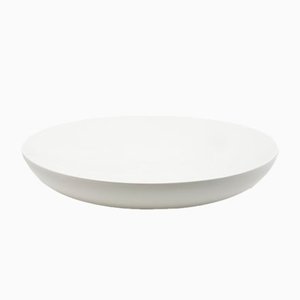1882’s Icon Collection chases the material limits
Ceramic Architecture
“When we started the company, we said we wanted to work with the most innovative designers in the world,” says 1882 Ltd.’s Emily Johnson, the fifth generation in her family to take on the ceramics industry in Stoke-on-Trent, England. Since launching five years ago, 1882 has fulfilled this mission through partnerships with an array of cutting-edge creatives, including Lindsey Adelman, Fort Standard , Philippe Malouin, Faye Toogood, and Kiki van Eijk. One of the company’s latest projects, The Icon Collection, adds two architectural heavyweights to the roster, John Pawson and Snarkitecture, along with new designs from Max Lamb.
1882’s most ambitious collection to date, Icon encompasses three handcrafted series, each of which pushes the limits of what ceramics can do. As Johnson puts it, “Our manifesto is to marry innovative design with traditional artisanal skills and to test the bounds of the material. We have done that with this collection, and it is a magnificent example of what Stoke-on-Trent can achieve in terms of ceramics. It took over two years, and we are still working on one of the pieces to perfect it.”
Lamb, a beloved designer on the London scene, has collaborated with 1882 in the past, most famously with his Crockery Collection. His contribution to the Icon Collection draws on the same concept—wherein the mold for the pieces is chiseled by hand—but at a much bigger scale. The technical prowess required by 1882’s potters to handle such large works of fine bone china—“real beasts,” according to Johnson—without breakage during firing is not easily matched by other ceramics companies out there today. Given the intricacies of the production, the series is limited to 25 pieces.
Rather than going big, experimental, New York-based architecture studio Snarkitecture pushed 1882’s artisans to explore fragility in two complementary designs, Positive and Negative. As the name suggests, these remarkably delicate vases feature the same motif in inverse—an excavated, Styrofoam-like pattern in either convex or concave form. When seen from above, it’s a wonder that the wafer-thin material can sustain such a complex intervention. Though challenging to hand mold, the 1882 makers have committed to producing this series in unlimited quantities, at least for now.
Cast Bowl, Pawson’s design for the Icon Collection, is the simplest, visually speaking, but also, ironically, the most challenging to make. As one of the world’s foremost masters of minimalism, Pawson put tremendous effort toward achieving perfection of form—“a quiet landscape in ceramic”—the success of which depended entirely upon flawless execution. Johnson explains that Pawson's assistant “showed up with a measuring tape, since Pawson had worked out the design down to the millimeter, already taking into account that bone china settles and contracts 15% during firing.” The first prototype of Pawson’s design collapsed, but the 1882 potters found a solution. It turns out that even the smallest speck of dust in the kiln can alter the seamlessness of these well-proportioned pieces. The 25 pieces in this series are each glazed four times in pale hues—all by hand, of course.
Ceramics of all varieties are experiencing a bit of moment, with the market for handmade pieces—both utilitarian and art pottery—finding ever-broader audiences. Amidst this energetic field, 1882 Ltd. stands out for its commitment to preserving and advancing the regional, artisanal skills that have been rooted in Stoke-on-Trent for centuries. For Johnson, the quality comes from the relationships that feed the work. “I work with the most incredible people, from scientists, to modelers and potters,” she explains. “And our customers come to us for innovative design that is beautifully made—they’re all just wonderful. It has been nearly impossible for me not to fall in love with the industry.”
More to Love
Salt & Pepper in Black Basalt from the Crockery Series by Max Lamb for 1882 Ltd

Large Deep Bowl in Black Basalt from the Crockery Series by Max Lamb for 1882 Ltd

Large Flat Bowl in Black Basalt from the Crockery Series by Max Lamb for 1882 Ltd

British Large Deep Bowl from the Crockery Series by Max Lamb for 1882 Ltd
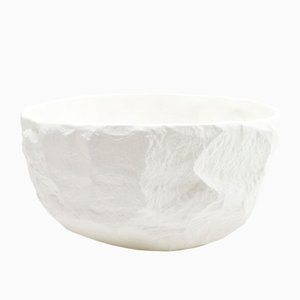
Big Vase 2 by Max Lamb for 1882 Ltd

Big Vase 1 by Max Lamb for 1882 Ltd
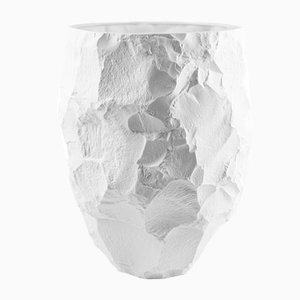
Positive Vase by Snarkitecture for 1882 Ltd
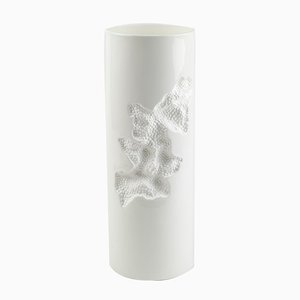
Indigo Storm Handleless Cup by Faye Toogood for 1882 Ltd

Indigo Storm Jug by Faye Toogood for 1882 Ltd

Indigo Storm Mug by Faye Toogood for 1882 Ltd
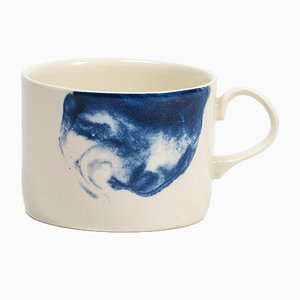
Indigo Storm Pasta Bowl by Faye Toogood for 1882 Ltd

Jenny Salad Plate by Deborah Allen for 1882 Ltd
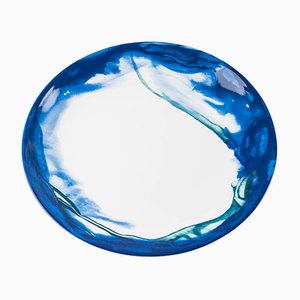
Jenny Pasta Bowl by Deborah Allen for 1882 Ltd

Jenny Mug by Deborah Allen for 1882 Ltd

Large Flat Bone Bowl from the Crockery Series by Max Lamb for 1882 Ltd

Tall Vase from the Crockery Series by Max Lamb for 1882 Ltd

Medium Platter from the Crockery Series by Max Lamb for 1882 Ltd
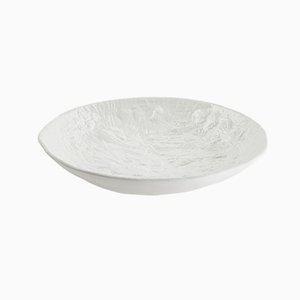
Cast Bowl by John Pawson
